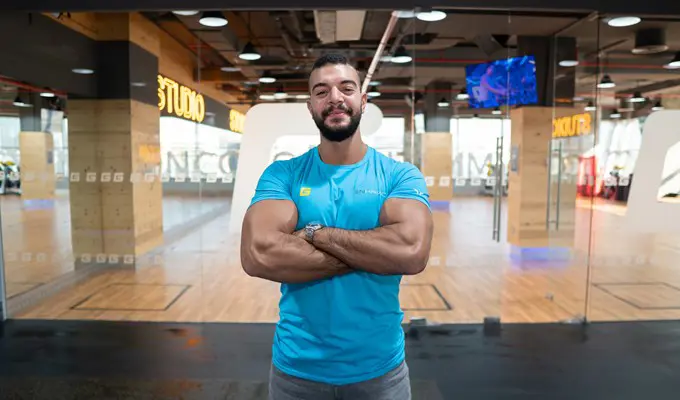WHY SHOULD YOU TRAIN SHOULDERS?
Building broad shoulders can be a central goal for many people. They contribute to the classic v taper that many seek – broad chest and shoulders, strong arms, slim waist. They will widen the upper body’s appearance, making you look stronger, more athletic, and often more confidant. Read on to find GymNation's best shoulder exercises!
However, as with many other muscles, there are a set of important practical reasons for developing strong shoulders. Obviously, shoulders are an important component of upper body strength. They are a prime mover in many every day and athletic tasks, such as lifting and objects and generating explosive pushing power. They are also often a good signifier of strength and health, as they will add to overall upper body muscle mass.
SIGN UP FOR YOUR FREE DAY PASS TODAY!
Shoulder mass can certainly be increased. Shoulder width can, to a certain degree – though mostly ‘widened shoulders’ are an optical illusion created by a slim waist and wide upper back muscles. Bone structures will be genetically determined and can give somebody naturally broad or slim shoulders. Collarbone width, for example, will play a key role in shoulder width.
However, you can build muscle mass across your shoulders, which will give you a lot more bulk and a little more width.
A well-rounded shoulder training regime that develops the shoulders uniformly will focus on all parts of the shoulder muscles, and will include a mixture of compound and isolation, single-joint exercises.
When we are talking about the shoulder muscles, most often we are talking about the deltoids – these are three muscles that sit over your shoulder joints. They consist of:
- The anterior deltoid: this is the front portion of the shoulder
- The medial or lateral deltoid: this is the middle head of the deltoids
- Posterior deltoid: this is the rearmost component
Generally, presses and movements that raise the arms will work the front and middle heads of the deltoids, whilst rear raises and rows will work the rear. In addition, carries, such as farmers walks, will work the deltoids in addition to the trapezius muscles of the upper back, another core component of shoulder strength and development.
There is also a postural element to shoulder development. Firstly, strong, well-developed shoulders themselves contribute to good posture. They can keep your shoulder joints in place, allow you to open your chest, and aid in keeping the upper spine and neck straight. Secondly, good postural habits can improve the strength and aesthetics of the shoulders. Standing upright, straight, with your shoulder blades pinned back and your chest and collarbones open will allow you to better use your shoulder strength, whilst also making them appear wider.
SHOULDER EXERCISES
OVERHEAD PRESS
Aiding in pressing weight over our heads is one the key functions of the shoulder muscles. Hence, the overhead press, in any guise, is a crucial addition to any shoulder routine.
The overhead press is to the shoulders what the bench press is to the chest – it is both a good benchmark of pressing strength through the relevant muscles and a great way in which to build them. It is functional, it is heavy and, as a compound, it involves plenty of muscle mass.
Main muscles used:
- Anterior and middle deltoids
- Triceps
- Core
LATERAL RAISES
Lateral raises are great isolation movements that bring in all three deltoids, using them in one of their primary functions – raising the arm. Though they don’t have so much practical, athletic carry over, they are perfect for quickly building mass as an accessory and/or finisher exercise at the end of a larger upper body workout.
Bend forwards slightly to bring the emphasis more into the posterior deltoids.
Main muscles used:
- Anterior, middle and posterior deltoids
- Trapezius (potentially)
FRONT RAISES
Front raises are another isolation movement that bring the emphasis almost solely into the anterior deltoid, raising the arms up directly in front of the body. As with lateral raises, they are a good accessory or finisher after some larger compound shoulder movements (like an overhead press variation).
- Anterior deltoids
The muscles of the shoulders – and the surrounding musculature – is incredibly important from both a performance and aesthetic point of view. They will help you to develop the v shape taper that many people aspire to, giving the illusion of a slimmer waist even as the extra muscle mass seems to broaden your shoulders themselves.
From a more practical point of view, shoulder exercises can help to ward off common injuries like tears and dislocations, that many people suffer as they age, and improved strength through the shoulder muscles will improve upper body pushing power and explosive capability.
Ahmed Selim
Personal Trainer, GymNation Motor City

















































































